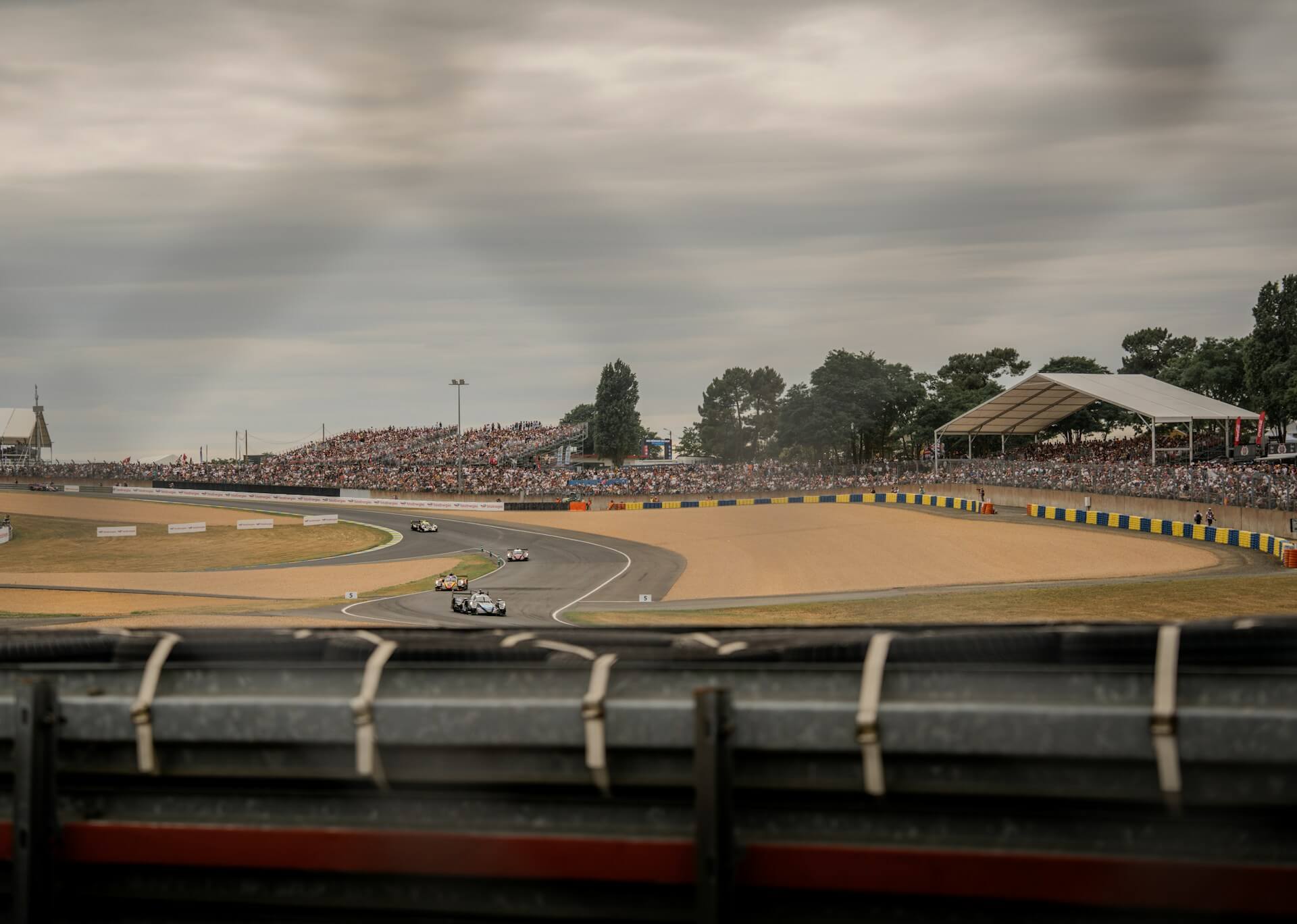Endurance Racing — What Is It and Why It’s So Addictive?
Endurance racing is a long-duration motorsport where teams compete in races lasting from 2 to 24 hours. Unlike short sprint races, it emphasizes strategy, technical durability, and teamwork. Drivers take turns in multi-hour stints, managing fatigue, fuel, and tire wear to reach the finish. This format attracts both professionals and amateur racers. Longer races offer challenges that hook drivers for life. Many racers find that their first season becomes an obsession that draws them back year after year.
“Endurance racing strips away everything except pure driving skill and teamwork. It’s addictive because every race tells a story.” — Club racer Mike Chen
Endurance Racing vs. Sprint Racing: Key Differences
The endurance racing vs sprint racing comparison uncovers substantial distinctions. The gap runs deeper than just time on track. Mastering endurance car racing basics requires understanding these distinctions:
| Aspect | Sprint Racing | Endurance Racing |
| Race Length | 15-45 minutes | 2-24 hours |
| Strategy Focus | Qualifying position | Fuel windows, tire management |
| Car Setup | Maximum performance | Performance and consistency |
| Driver Mindset | All-out attack | Pacing and conservation |
📋 Key Difference: Sprint races reward raw speed and quick pit lane visits. Endurance demands patience, as one mistake can destroy hours of careful work behind the wheel.
Car Setup Requirements
Endurance vehicles need modifications that prioritize durability:
- Enhanced cooling systems — Larger radiators prevent overheating during long stints
- Heavy-duty brake packages — Bigger rotors handle repeated heat cycles
- Increased fuel capacity — Larger fuel cells extend stint lengths
- Safety equipment — Roll cages, fire suppression systems meet series rules
- Lighting upgrades — LED arrays illuminate night driving sections
Your daily driver won’t survive 6 hours of wheel-to-wheel driving. These modifications transform street vehicles and are only permitted with proper technical approval from racing officials.
Driver Mentality & Fatigue
Mental preparation separates successful endurance drivers from those who fade after two hours.
“I’ve seen drivers burn out in the first stint because they drove like it was a 20-minute sprint. Pacing yourself is everything.” — Instructor Sarah Williams
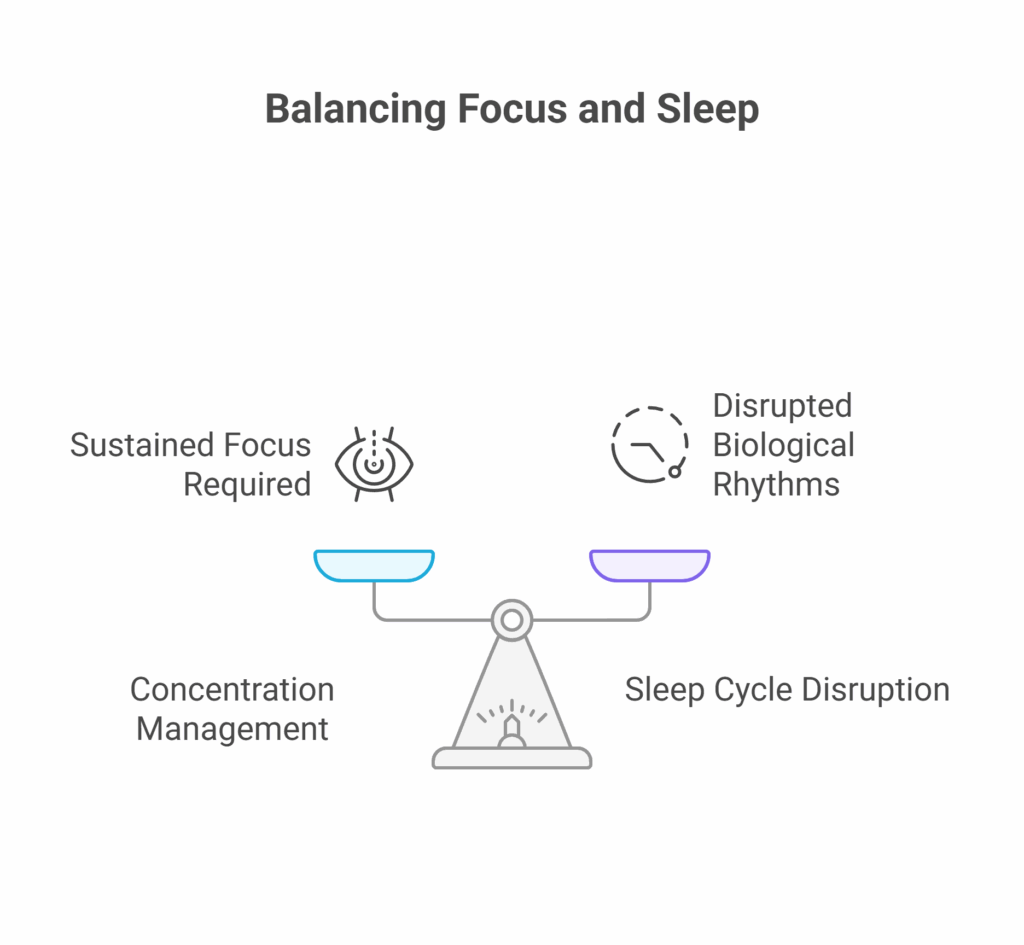
🧠 Fatigue Science: Studies show reaction times slow 15-20% after 3 hours of continuous driving. This is considered a critical safety factor.
Strategy & Pace Management
Racing strategies revolve around saving energy for faster laps later—driving faster in later stints when traffic thins and conditions improve.
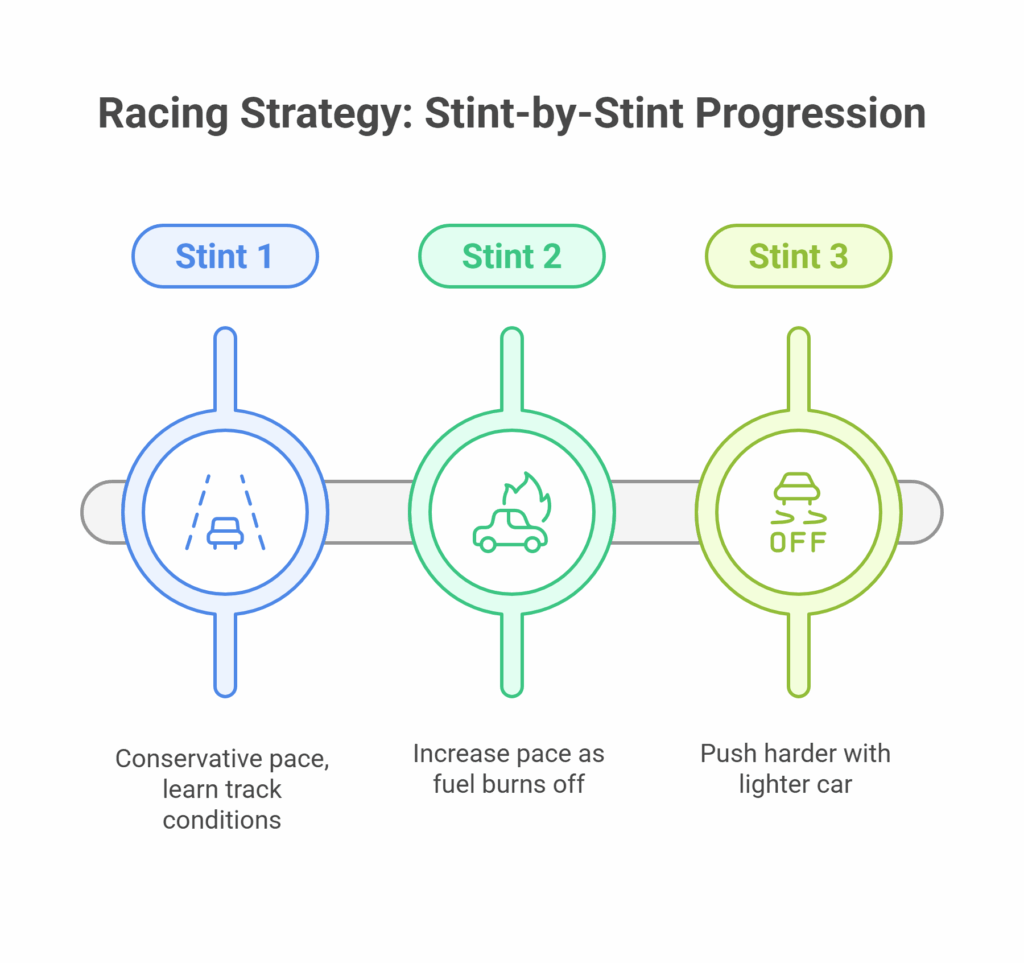
This approach rewards patience and calculated risks. Experienced racers know that proper pace management often determines who will compete for victory at the race finish.
The right wheel position and timing can make all the difference.
The Thrill Factor — Why Endurance Racing Feels Addictive
The addiction stems from unique psychological rewards. Team endurance racing creates deep emotional connections through shared struggle and triumph that individual motorsports cannot replicate.
🧬 Dopamine Research: Extended competition releases dopamine in waves, creating stronger addiction patterns than short-duration activities.
Team Camaraderie & Shared Goals
Amateur endurance racing builds relationships beyond the track during each race weekend. Team racing demands that participants share expenses, responsibilities, and intense experiences that create lasting friendships.
“We’ve been through broken transmissions at 2 AM, victory celebrations, and everything in between. These guys are family now.” — Team captain Rodriguez Martinez
Weekend warriors discover that preparing requires months of planning. Crews meet regularly to maintain cars and practice pit stops. This shared commitment builds trust closer than most friendships.
Many friends join together to form teams. These friends often become lifelong companions. Finding the right place to meet and practice becomes crucial.
Night-Driving Sensory Overload
Racing after dark transforms familiar tracks into alien environments. Your visual cues shrink to what headlights reveal, creating sensory overload.
Visual Challenges: Depth perception changes dramatically. Brake markers disappear into darkness. Corner apexes become educated guesses.
Lighting Equipment: Professional LED arrays create artificial daylight. Teams invest heavily in visibility equipment for night stints.
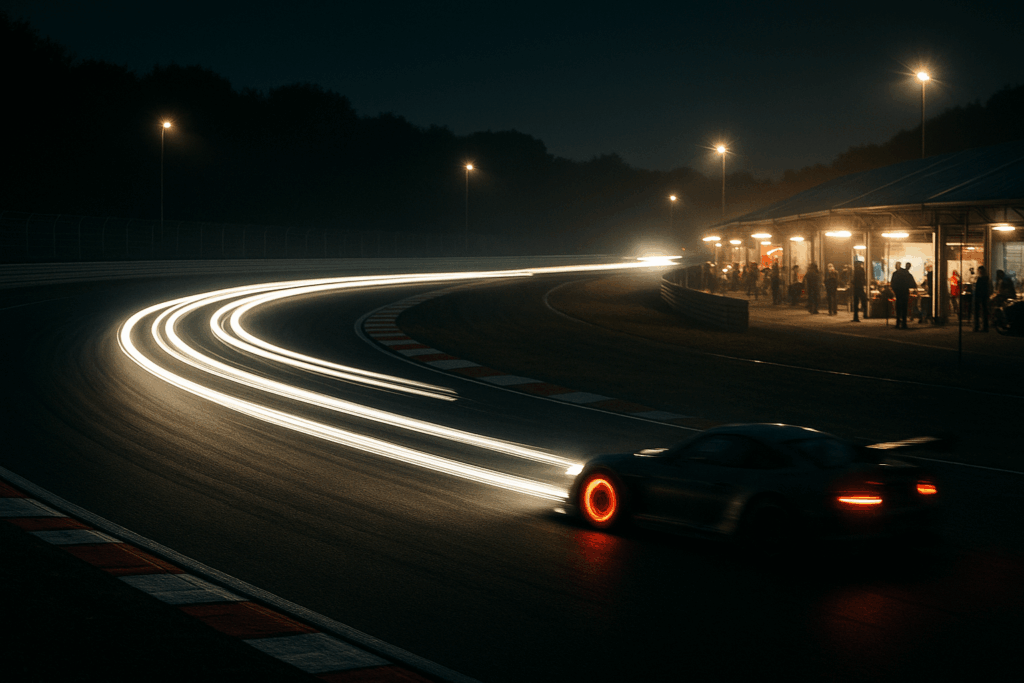
Flow State & Adrenaline
Extended sessions create unique neurological states. Prolonged focus triggers sustained endorphin release.
Endurance Racing Classes Explained
Multi-class racing defines specific events, with different vehicle categories sharing the same track. Understanding these series helps newcomers choose entry points.
Structure:
- Prototype Categories: Purpose-built machines
- GT Classes: Production-based sports cars with modifications
- Touring/Production: Lightly modified street cars
- Club/Regional: Entry-level categories for beginners
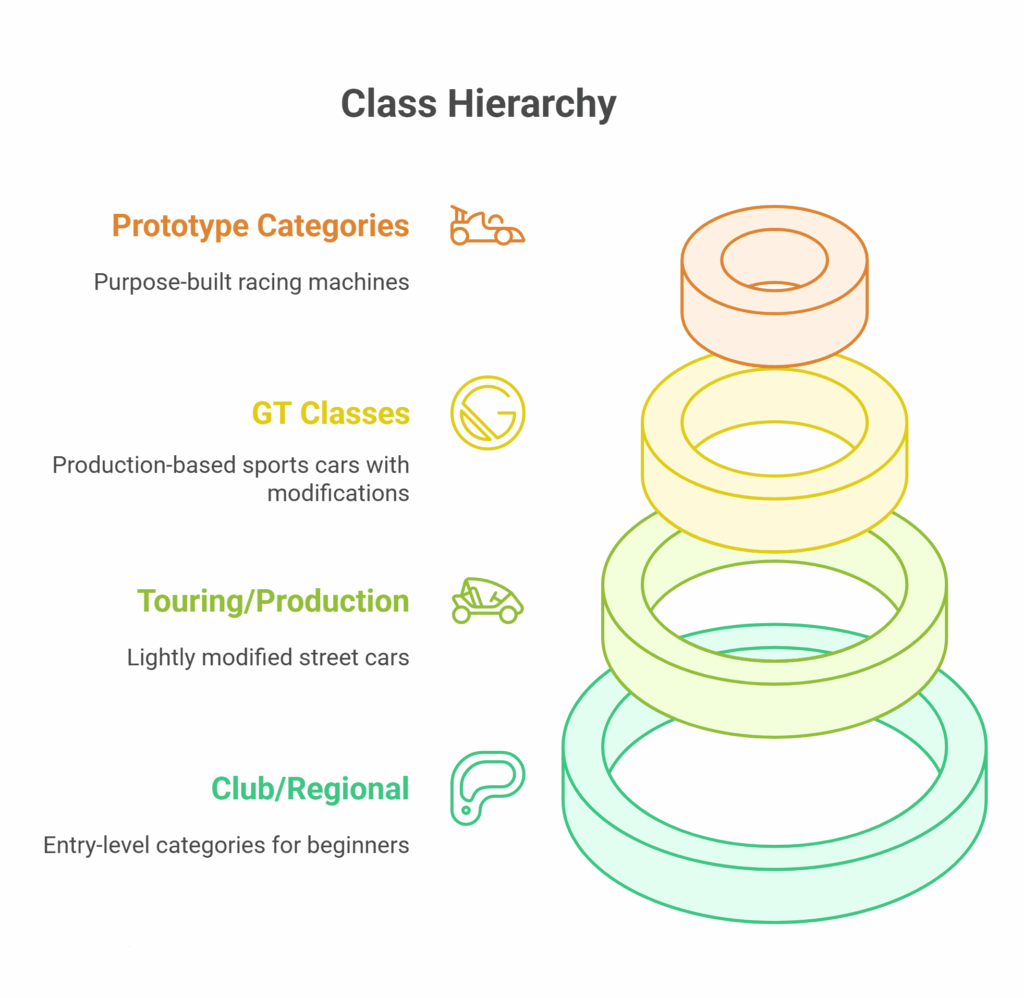
Each class has specific rules governing modifications and eligible vehicles. These series are separated by performance indicators to ensure fair competition among different types of cars.
GT Classes (GT3, GT4)
GT3 Pros/Cons: ✅ Professional performance ❌ Expensive ($150,000+) ✅ Established support networks ❌ Complex systems
GT4 Pros/Cons:
✅ More accessible pricing ❌ Still requires significant budget ✅ Gentleman driver focus ❌ Less aftermarket support
Prototype & LMP Tiers
| Category | Engine | Weight | Typical Expenses |
| LMP3 | 5.0L V8 | 900kg | $200,000+ |
| LMP2 | 4.2L V8 | 930kg | $400,000+ |
Most amateurs encounter prototypes as traffic to navigate rather than machinery to drive. These vehicles create unique challenges for club-level competitors.
Production-Based / Touring
🏁 Affordable entry point
🔧 Controlled modifications
💰 Lower operating costs
Production-based categories welcome newcomers with limited modifications to street vehicles. Series like World Racing League create competitive racing without massive expenses. These championships showcase skill over equipment advantages.
Many manufacturers like Porsche support these series with official backing, particularly in events during popular months like June and July when weather conditions are optimal. Note that throughout the racing season, teams must ensure their vehicles remain compliant with class regulations.
Multi-Class Racing Etiquette
⚠️ Mixed-field racing requires different skills. Faster cars approach constantly while slower traffic blocks the racing lines.
Essential Rules:
- Check mirrors every 3-5 seconds
- Hold your line when being overtaken
- Give faster classes racing room
- Use point-by systems
Note that only permitted maneuvers should be attempted during multi-class situations, and drivers should watch for approaching faster traffic at all times.
Anatomy of an Endurance Race
Understanding structure helps newcomers prepare better. WRL endurance racing follows specific formats that teams must understand, including detailed rules about driver stints and pit procedures. Teams must be eligible for their chosen vehicle and understand all official rules.
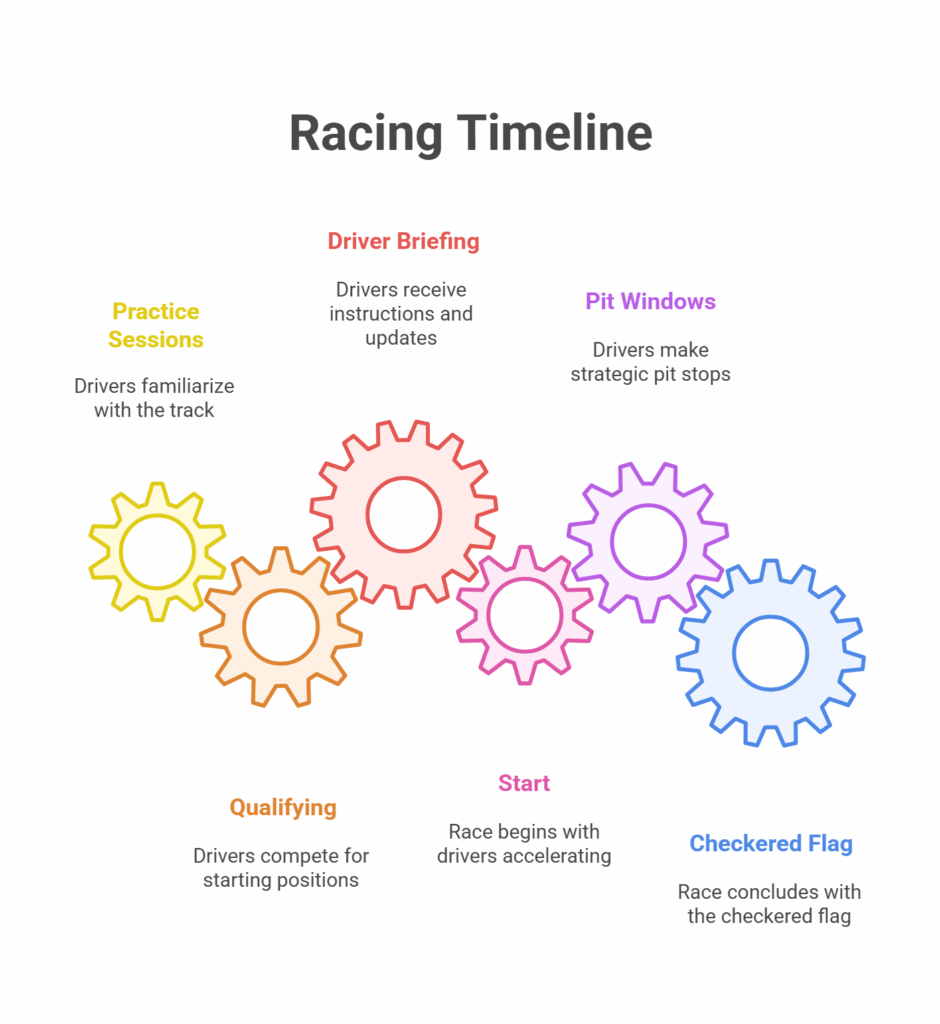
Stint Calculator: Most series limit individual driving time to 2-4 hours maximum. Driver stints must be observed carefully.
Typical Race Lengths (6 h, 12 h, 24 h)

A 24-hour event represents the ultimate test held worldwide. Major events are organized in France and other countries. These run continuously through day and night, testing every aspect of preparation.
The most famous event takes place each June, attracting teams from around the world. Other notable events are in November and showcase different vehicle classes across various championship series.
Spectators can watch these events unfold over the entire duration. Many teams participate in these prestigious venues as the ultimate test of their abilities.
Driver-Change Timing & Rules
Requirements Checklist:
☑️ Minimum pit stop time
☑️ Complete vehicle shutdown
☑️ Safety harness inspection
World Racing League rules require completing minimum stint lengths. Planning driver changes around refueling strategies optimizes efficiency. Note that only permitted changes are allowed during specific windows, and teams must follow strict protocols throughout the day.
Safety-Car & FCY Procedures
Protocol Steps:
- All vehicles follow the safety car
- Pit lane opens after one lap
- Vehicles line up by class
- Racing resumes with the green flag
Safety vehicles create strategic opportunities for “free” pit stops.
Overnight & Weather Variables
| Condition | Temperature | Strategy Impact |
| Clear Night | 45-65°F | Normal pace |
| Rain | 40-70°F | Conservative driving |
Driver Fitness & Hydration Essentials
Physical preparation determines performance during extended stints and forms a critical component of a racing strategy that many teams overlook.
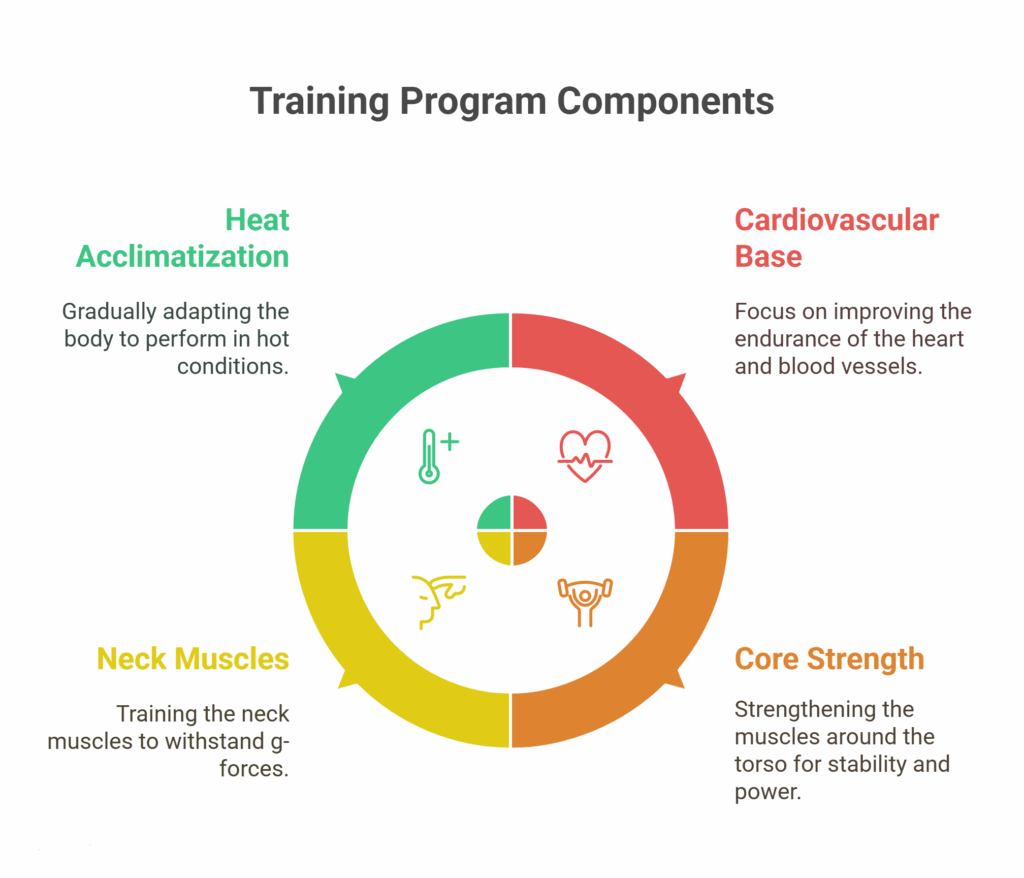
Core Strategy Pillars — How Fuel Strategy, Tire Choice, and Pit Stops Decide Endurance Races
A successful racing pit strategy balances gasoline consumption, tire management, and pit timing. Smart teams can quickly adjust strategy based on tracking gasoline usage and tire wear patterns.
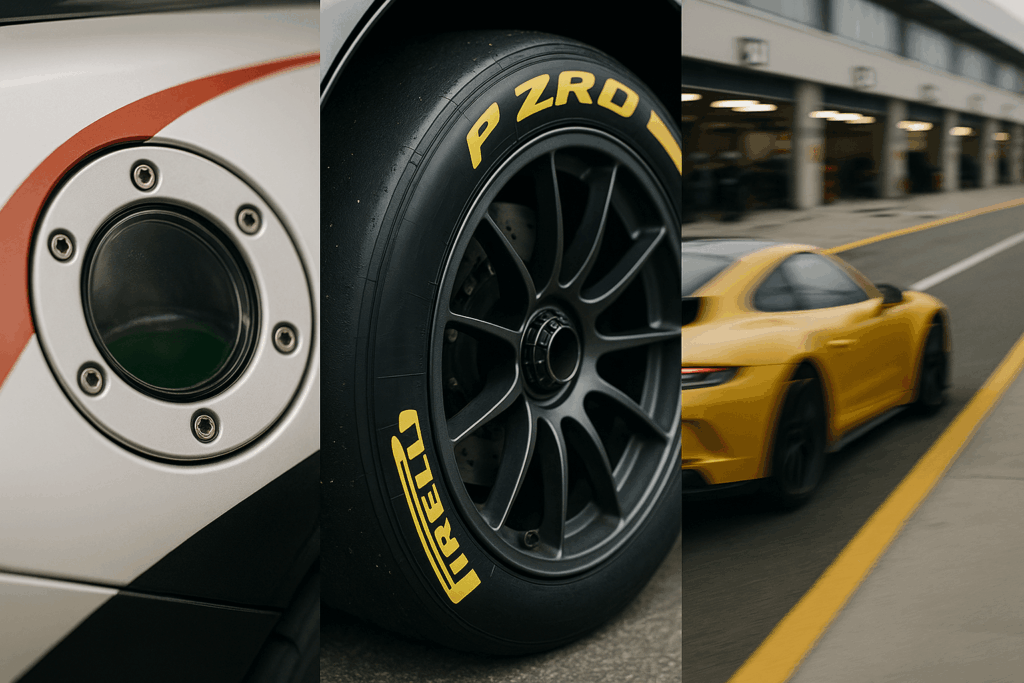
Fuel Window Calculations
Sample Strategy:
- Consumption: 2.8 gallons/hour
- Tank Capacity: 22 gallons
- Safe Window: 6.5 hours
Driver stints must align with refueling strategies to avoid extra pit stops that can destroy race position.
Tire Compound & Wear Management
Teams monitor tire wear patterns to optimize setup. Different compounds suit various conditions based on stint length and weather.
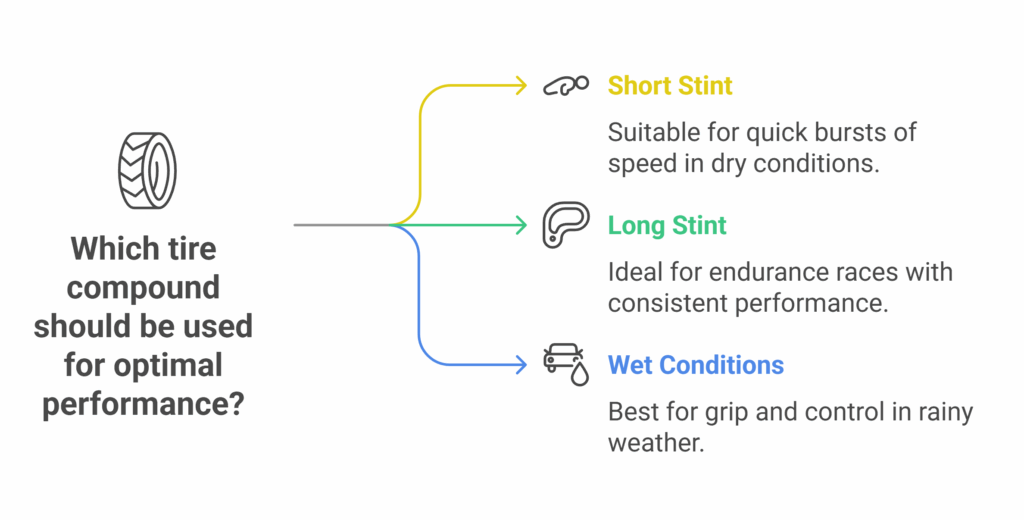
Pit-Stop Sequencing & Crew Roles
An efficient racing pit strategy requires practiced choreography. Each crew member has specific responsibilities and must work closely together.
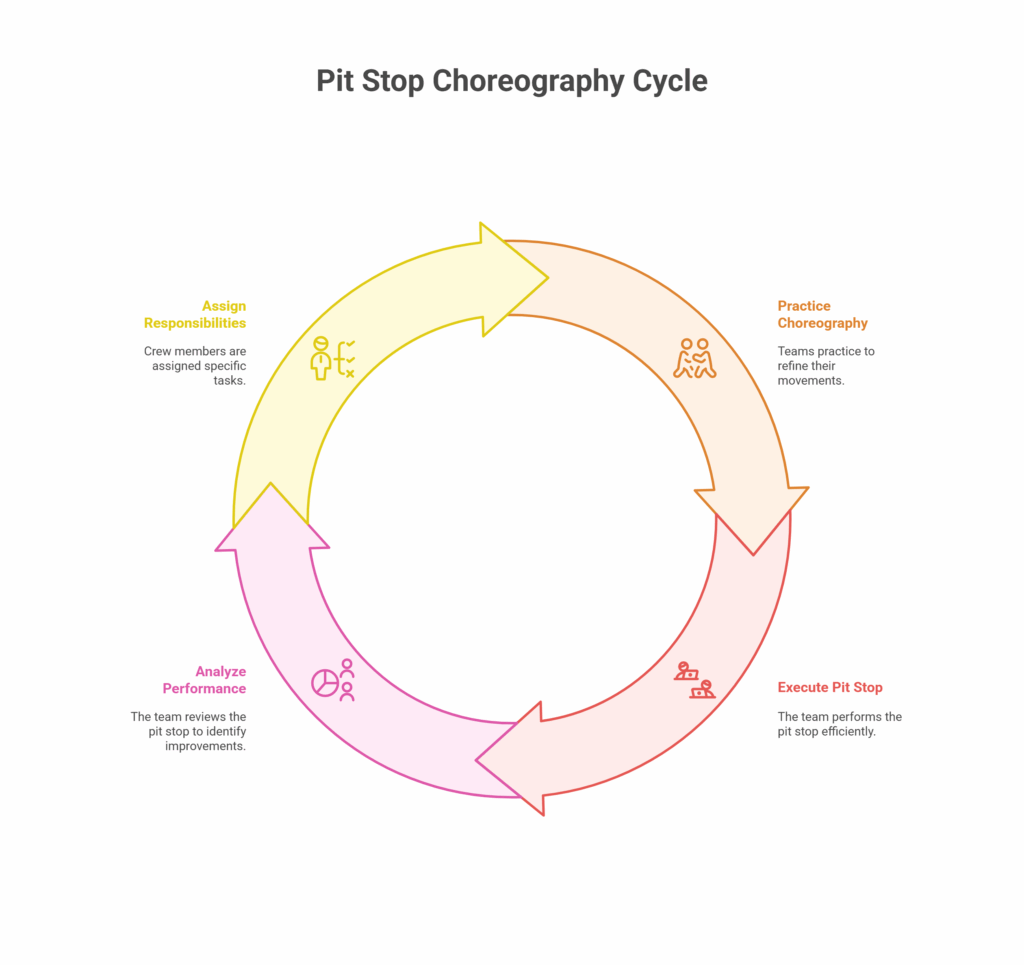
From Simulator to Seat Time — Turning iRacing Data into Real-World Pace
Virtual racing platforms provide valuable preparation for those learning how to start racing. Use simulation data to accelerate learning.
Export & Clean Telemetry
Extract lap times, sector splits, and gasoline consumption data from virtual sessions. Clean data removes outlier laps affected by traffic or incidents. Focus on consistent lap times rather than one-off fast laps.
Build a Track-Specific Pace Map
Create reference lap times for different phases. Early stint times with full gasoline loads differ from late stint performance. Map optimal racing lines and braking points using virtual knowledge to reduce practice time at real events.
Understanding each course section helps prepare more effectively, and mastering the course layout is essential for competitive lap times.
Drills for Virtual → Real Transfer
Practice consistent lap times rather than ultimate speed. Virtual racing teaches racecraft and strategic thinking that transfer directly to real vehicles. Use simulation to learn traffic management and multi-class racing situations.
Many racers develop their skills by studying how professionals navigate challenging situations, and experienced competitors often watch race footage to improve their technique.
Safety First — Car Prep, Tech Inspection & Night Gear
Safety equipment requirements focus on protection.
Compliance Checklist:
- Roll cage specs
- Fire suppression
- Harnesses
- Fuel cells
- Lighting equipment
Technical inspections verify safety compliance. Teams prepare documentation and schedule early inspections. Many enthusiasts subscribe to YouTube channels to watch tech inspection walkthroughs and prepare properly for their first event in line.
Teams must stay closer to the regulation specifications.
Rookie Mistakes to Avoid (and Quick Fixes)
First-time racers make predictable errors, including over-driving, hydration gaps, and yellow-flag errors.
Over-Driving Early Stints
🚫 Mistake: Racing at sprint pace
✅ Fix: Plan a conservative early pace
Skipping Hydration & Rest
🚫 Mistake: Inadequate fluid intake
✅ Fix: Scheduled drinking breaks
Ignoring Yellow-Flag Protocol
🚫 Mistake: Confusion during cautions
✅ Fix: Study series rules
Smart preparation helps rookies avoid pitfalls. Additionally, before purchasing any used race car, check its href=”https://epicvin.com/”>history</a>. Hidden damage or title issues can affect safety and racing eligibility.
FAQ
Is endurance racing hard?
Yes—long stints stress both driver stamina and car reliability, demanding careful pacing and prep.
How long is an endurance race?
Club events run 2–8 h. Marquee races span 6, 12, or 24 hours, with the winner covering the most distance.
Who can race in WRL?
Anyone 18 + with a recognized road-race license, medical clearance, and series orientation.
Is endurance racing harder than Formula 1?
F1 is peak speed; endurance adds sleep deprivation and shared machinery—hard in different ways.
What are the “big three” endurance races?
Daytona 24, Sebring 12, and Le Mans 24.
How much does the 24 Hours of Lemons cost?
Teams typically spend $2 000–$3 500 all-in for a budget build, including entry fees.
What defines a 24-hour endurance race?
A timed event where teams drive continuously for 24 hours. Most distance wins.
Do I need a competition license for amateur endurance racing?
Yes—WRL, NASA, and similar series require at least an entry-level comp license and basic medical.

